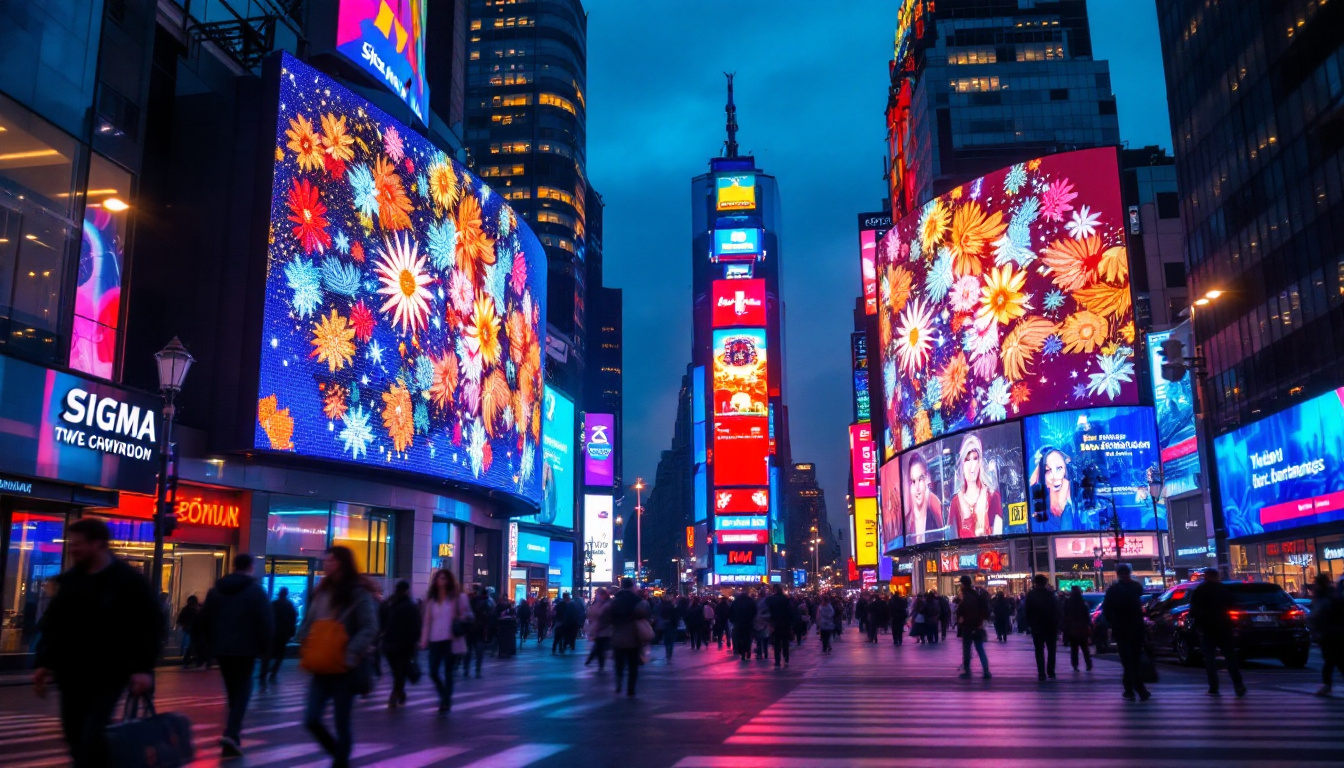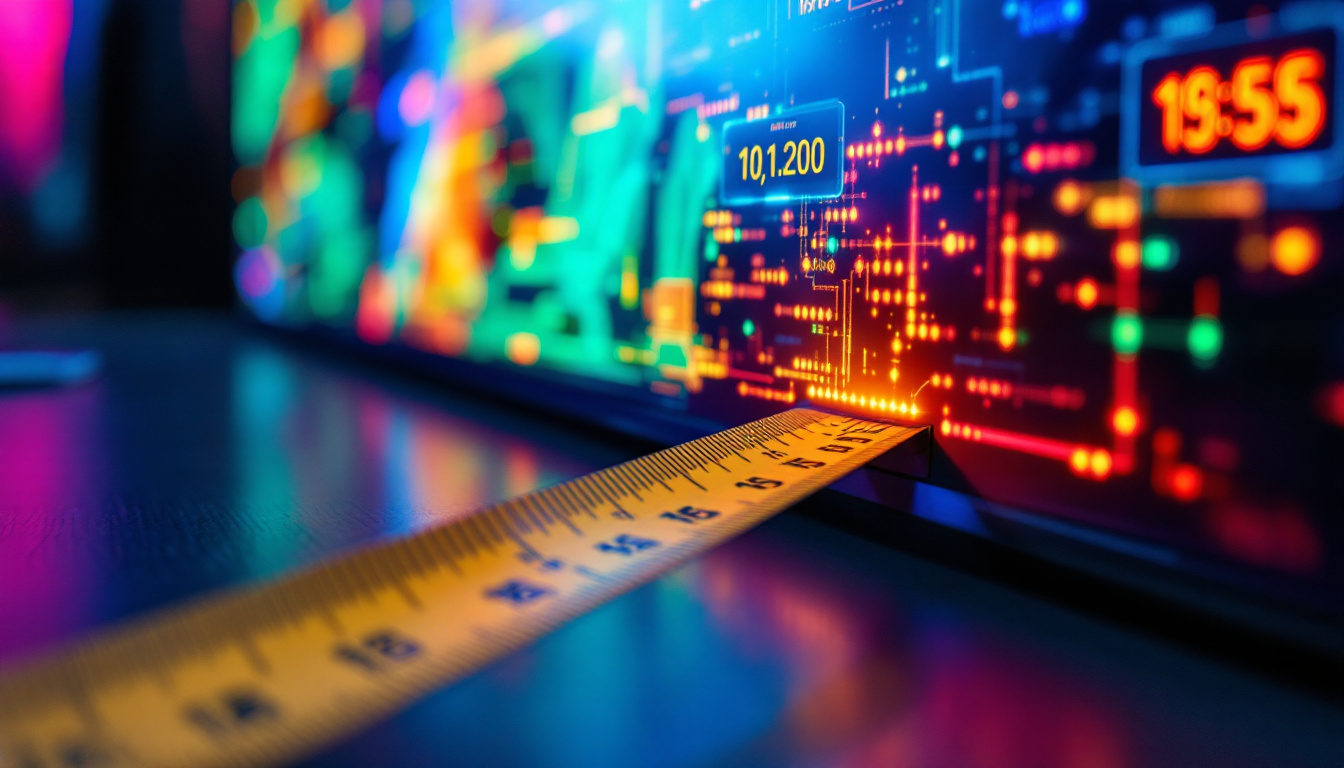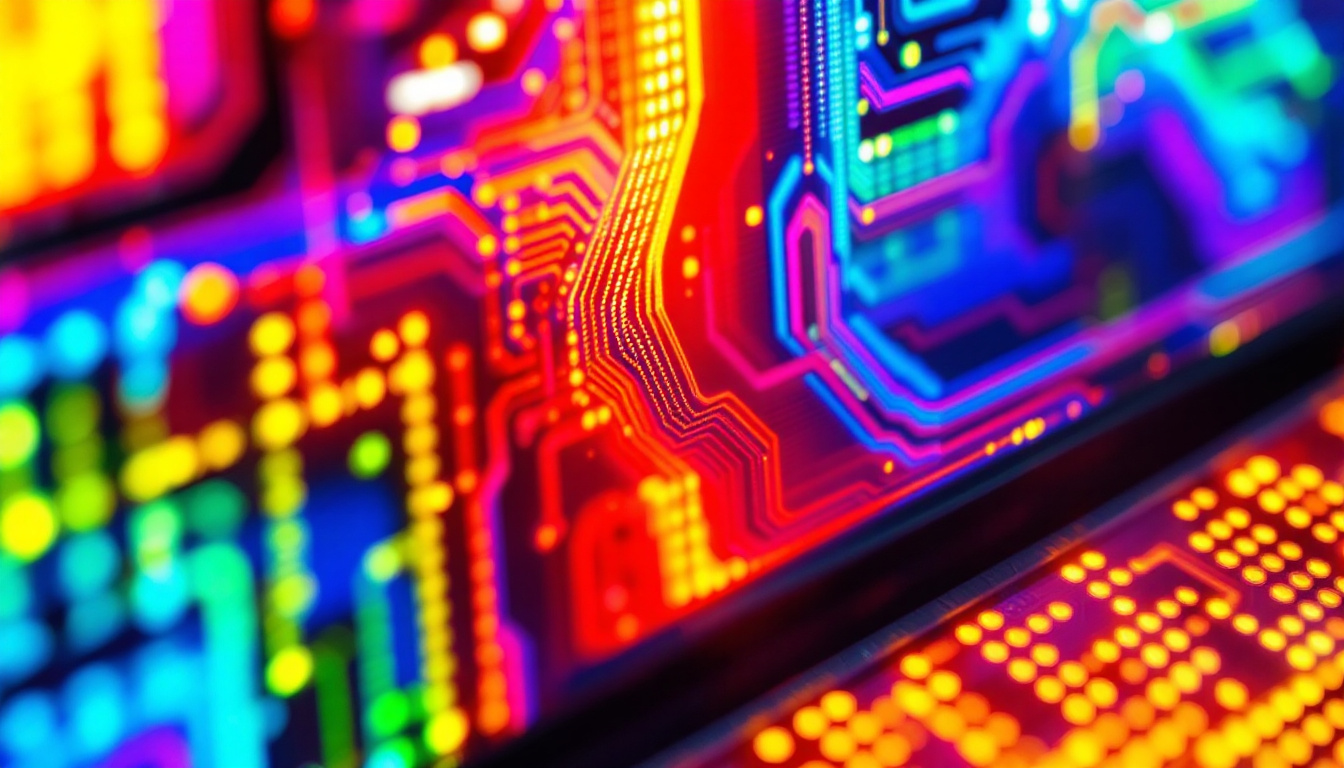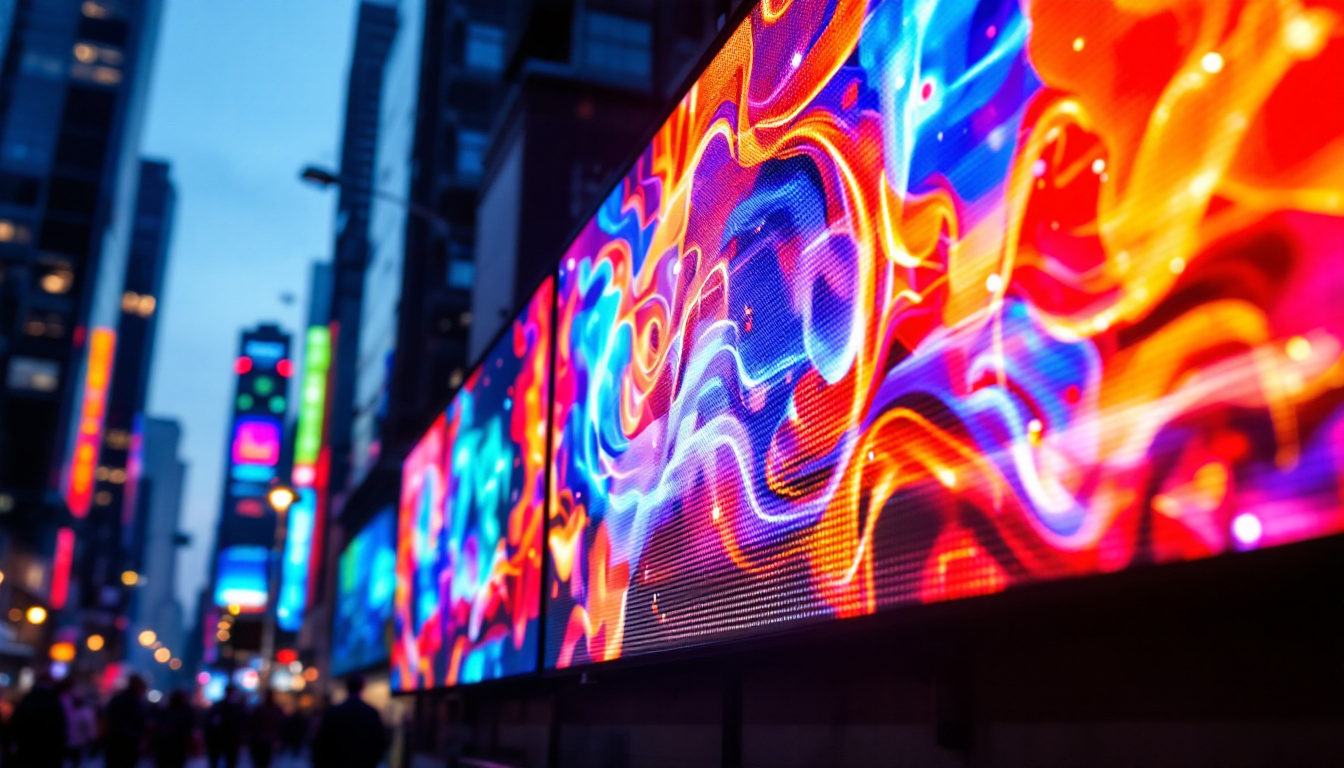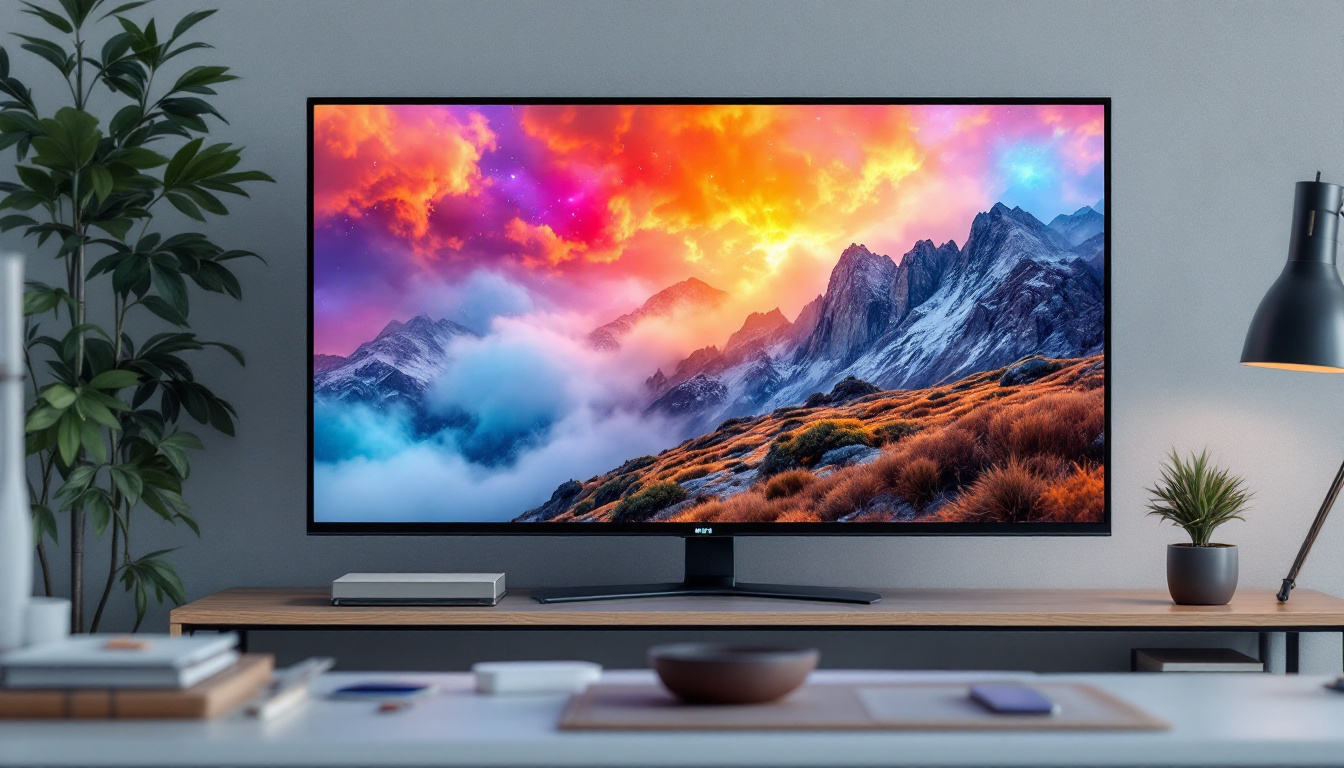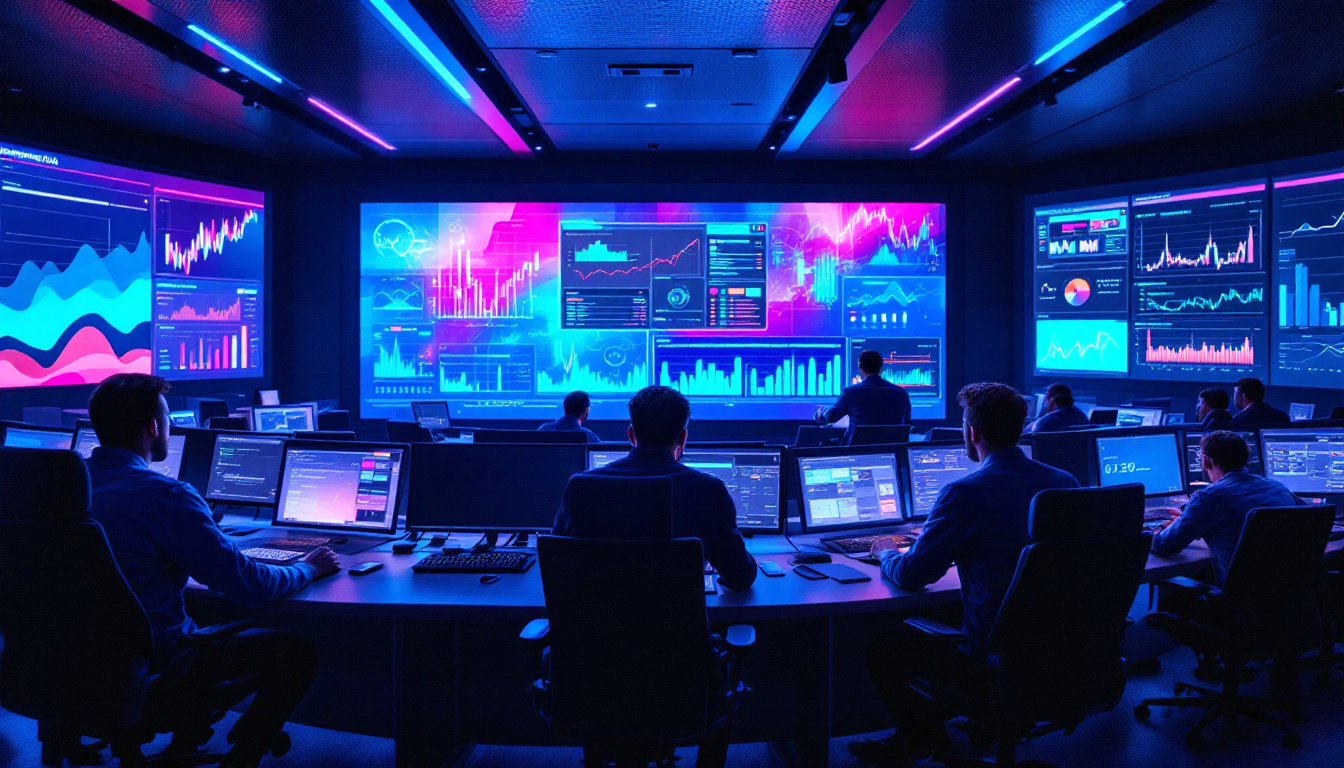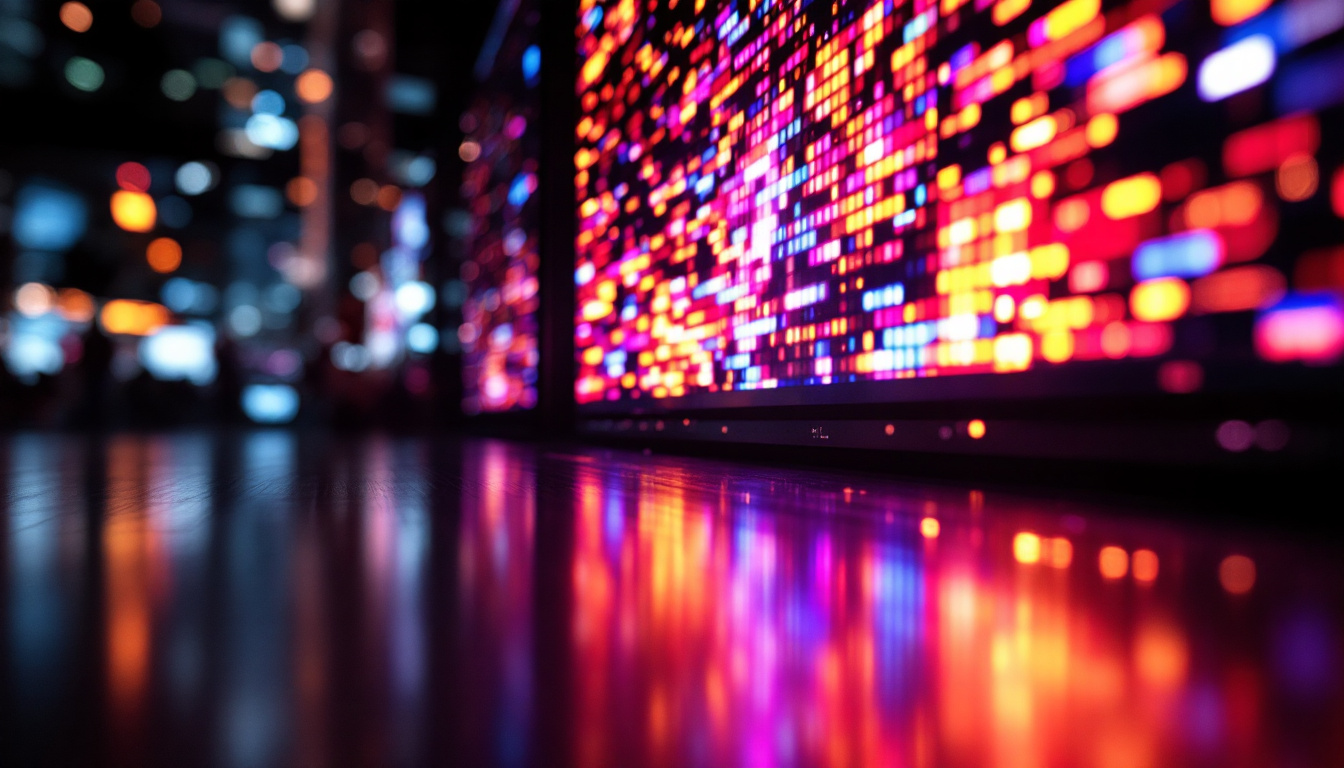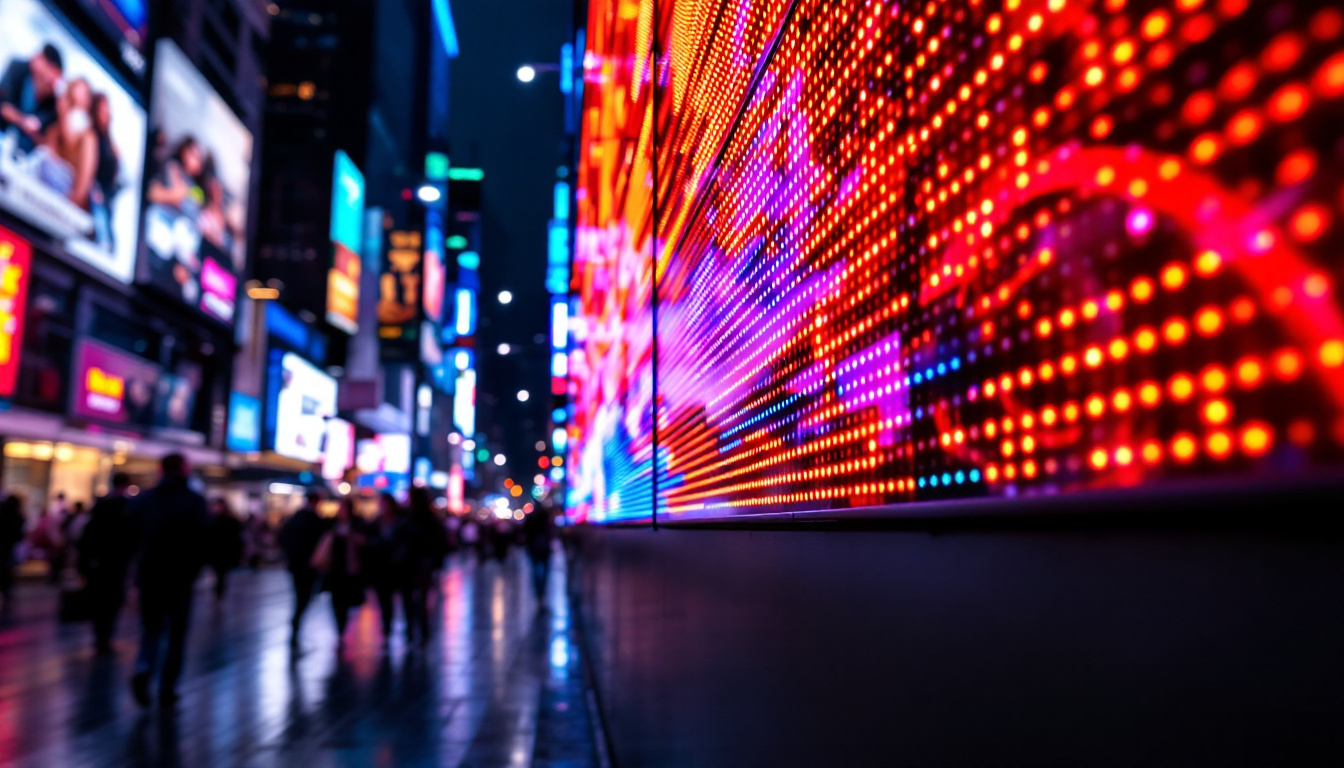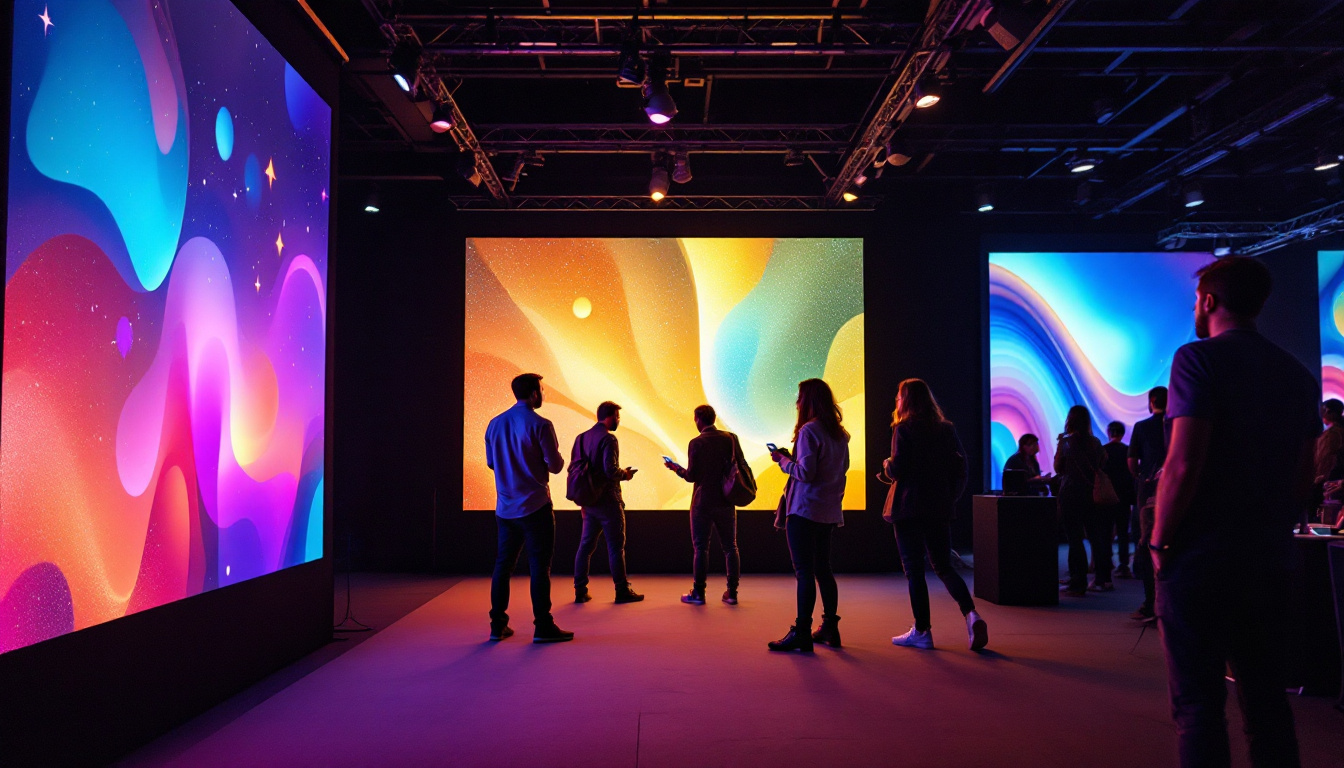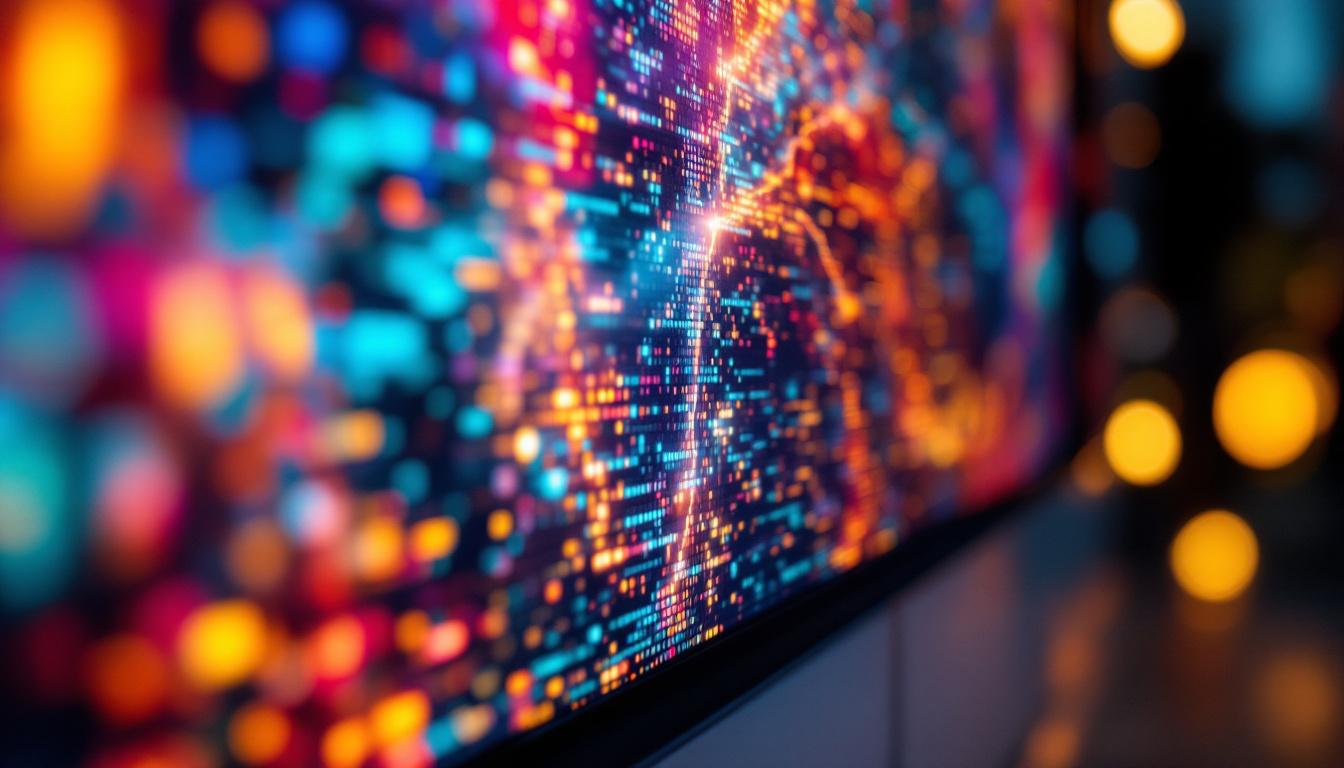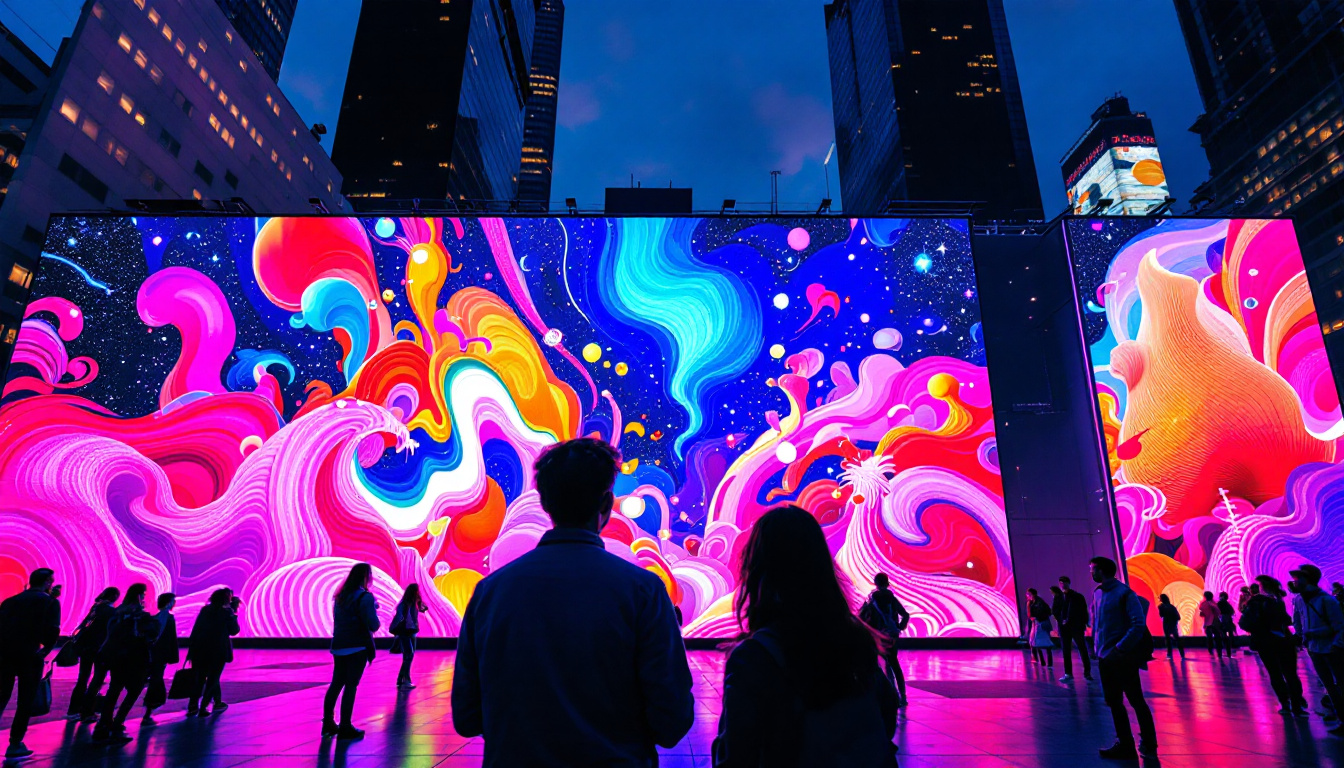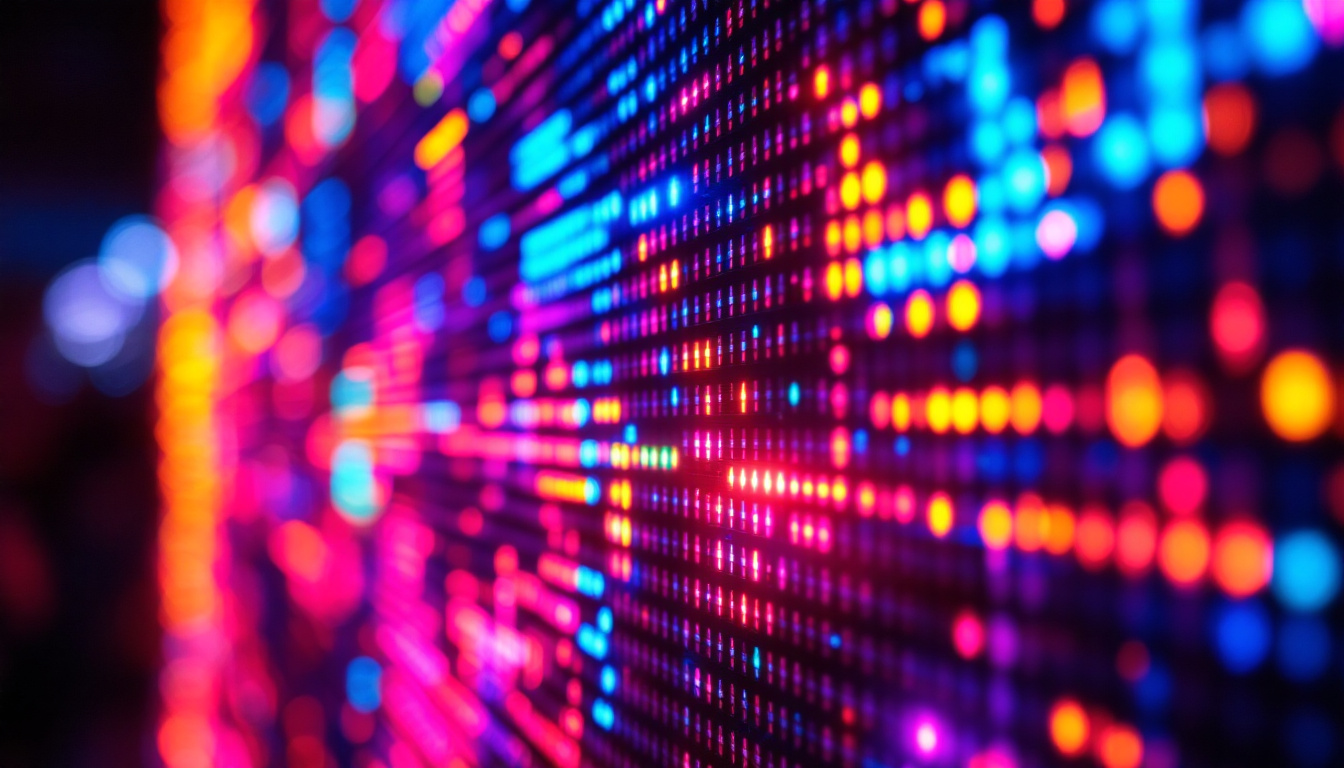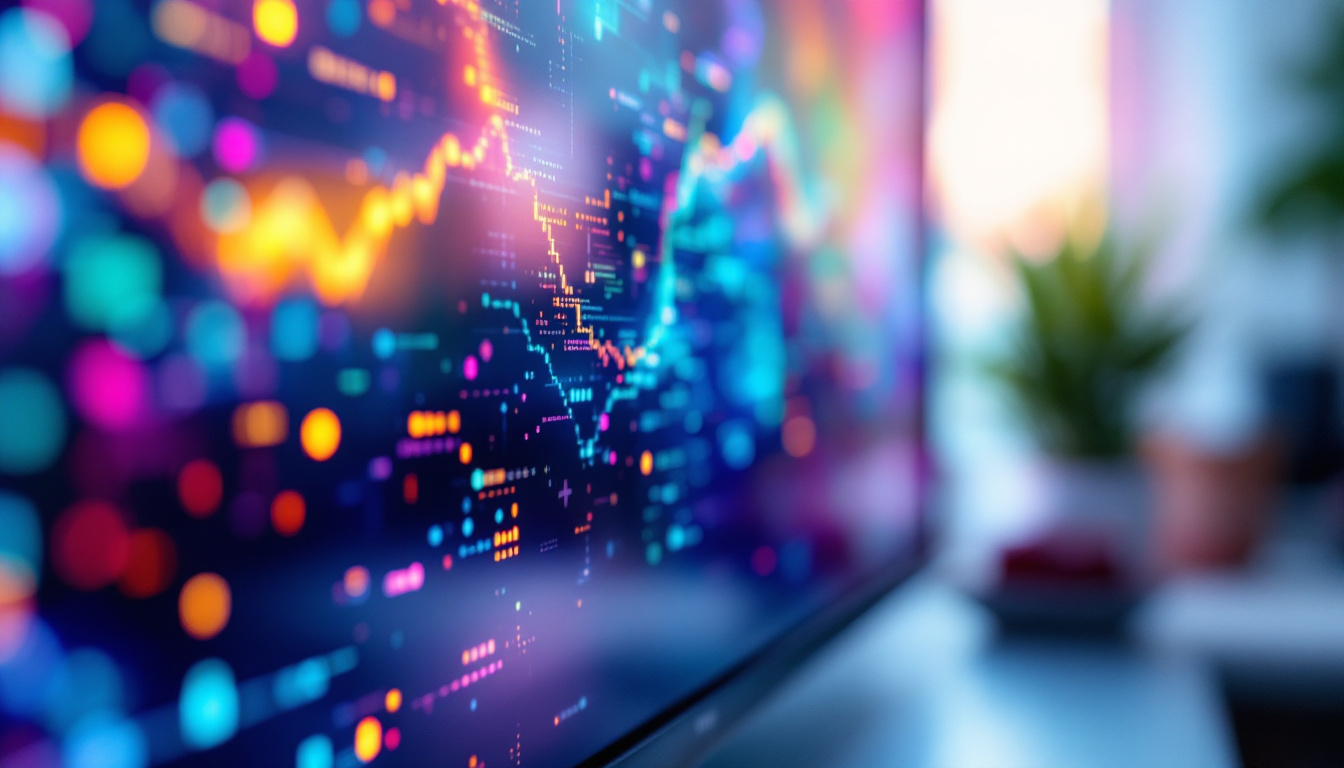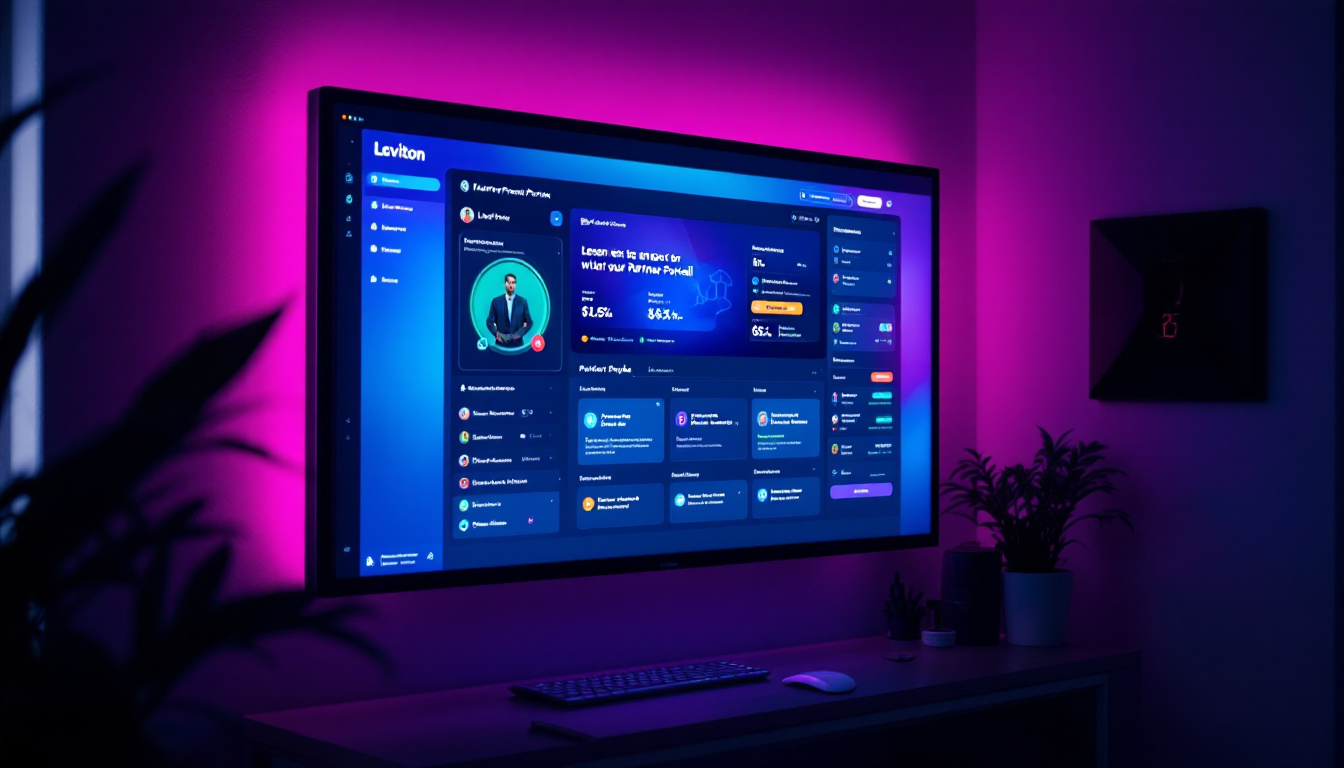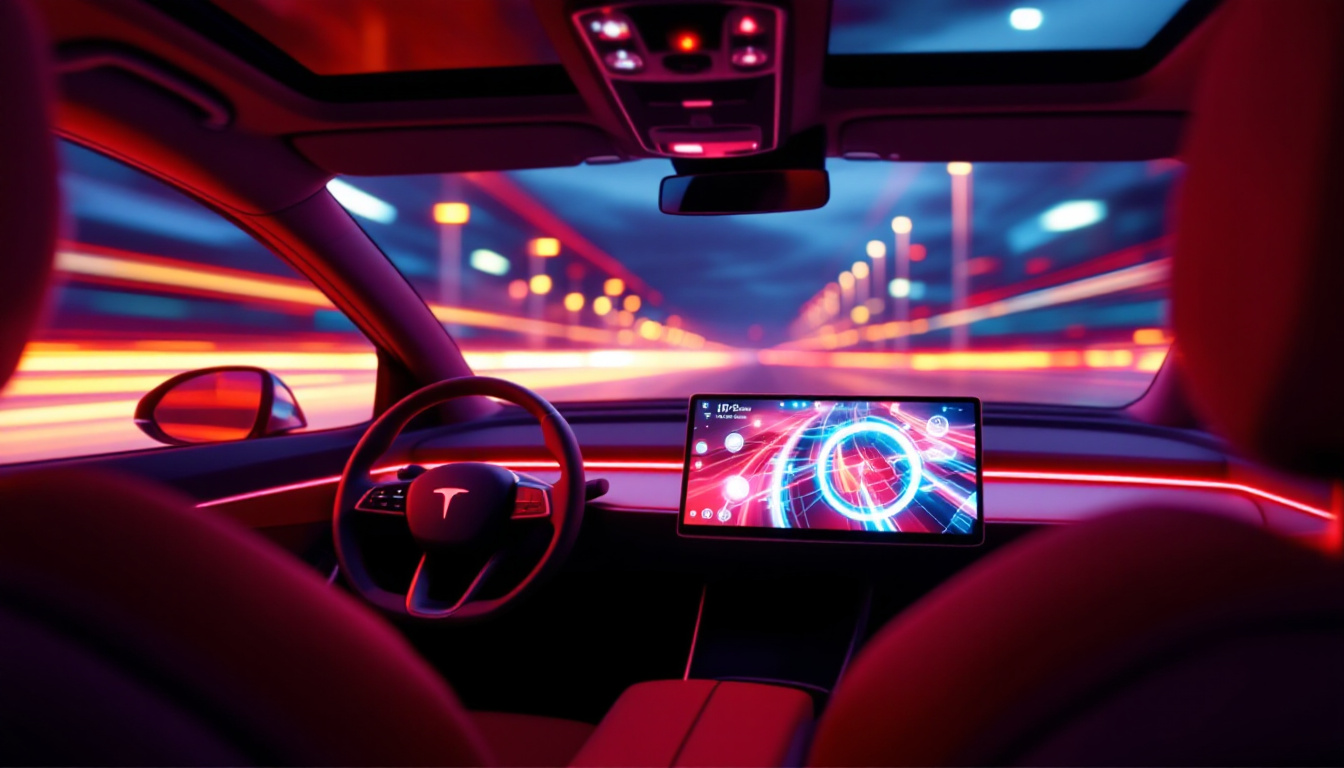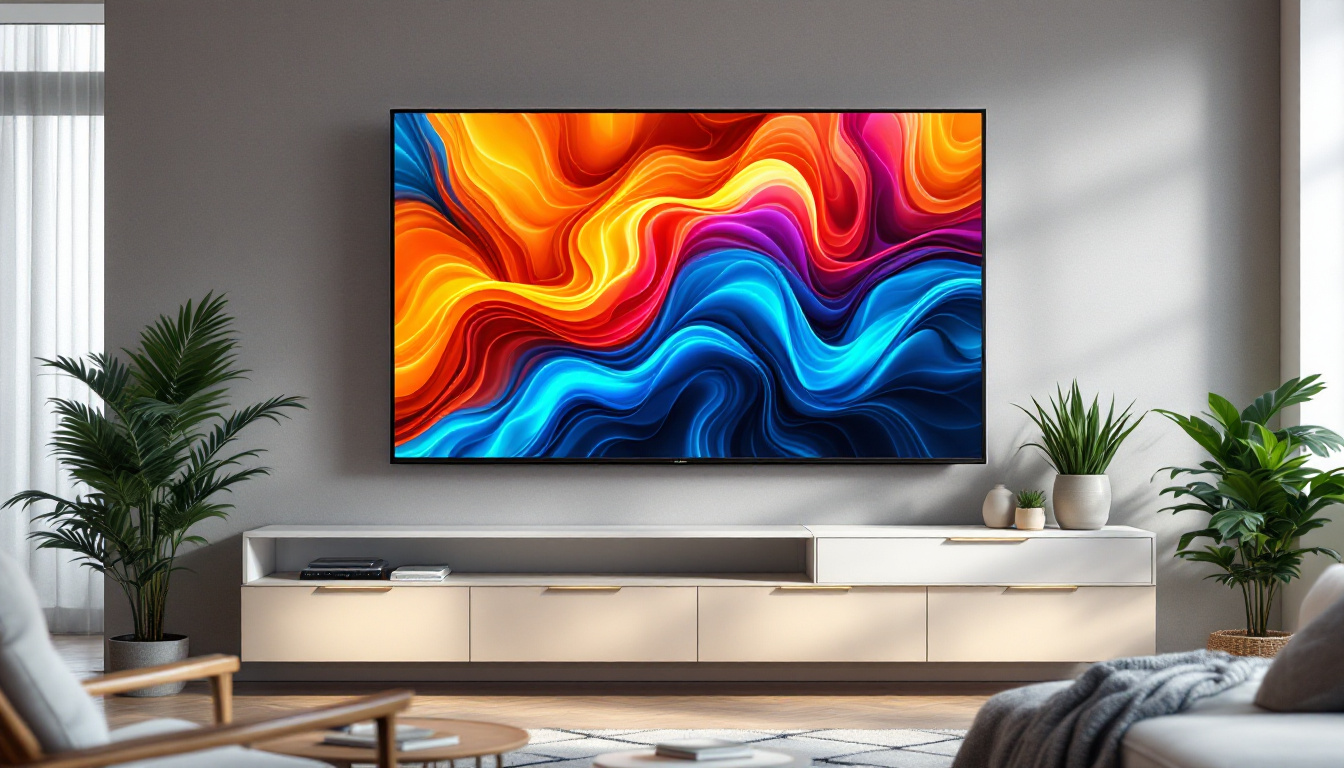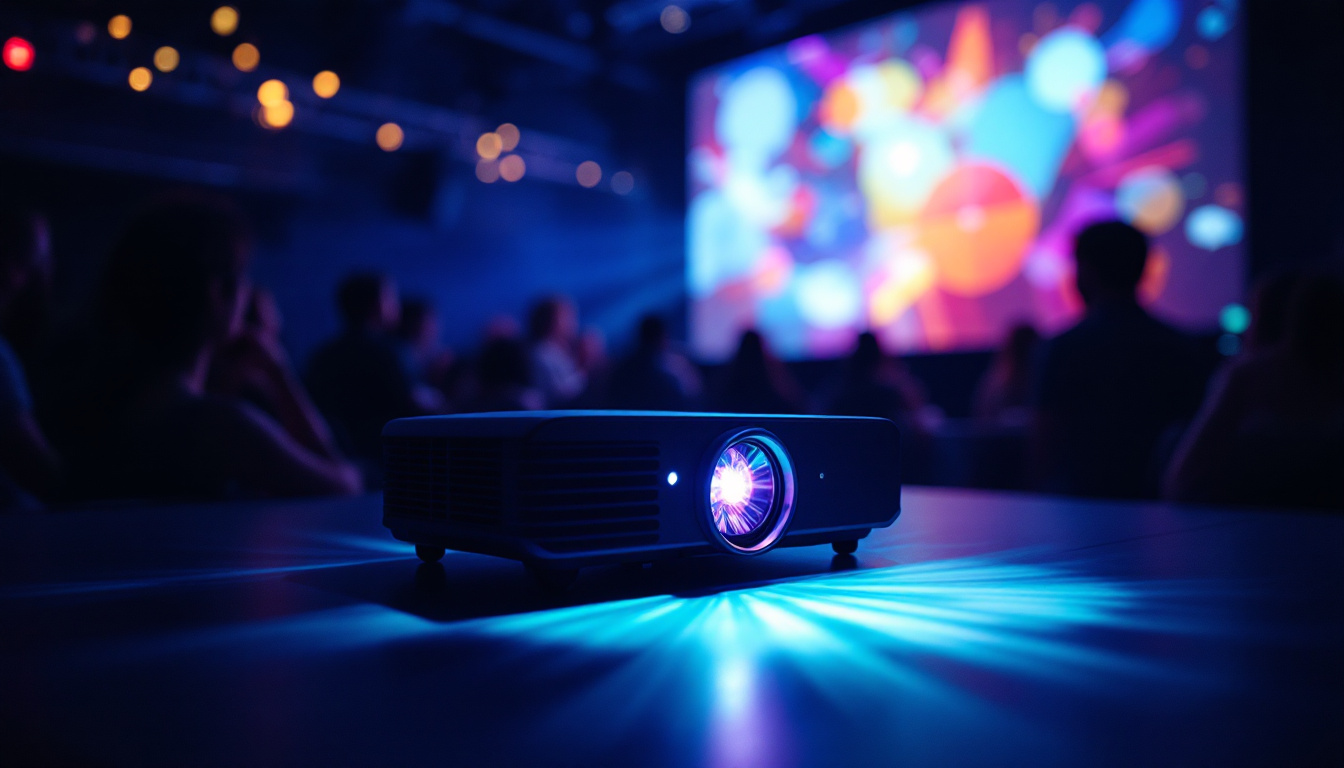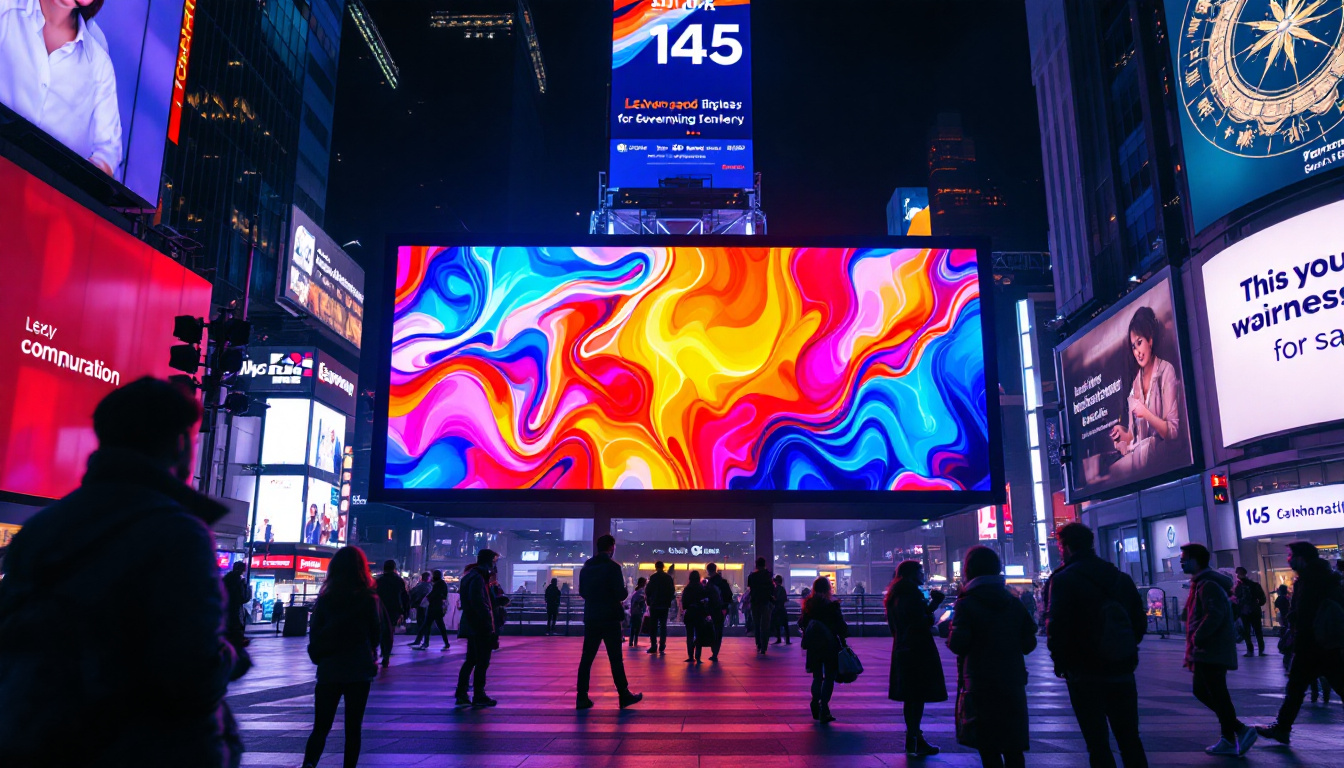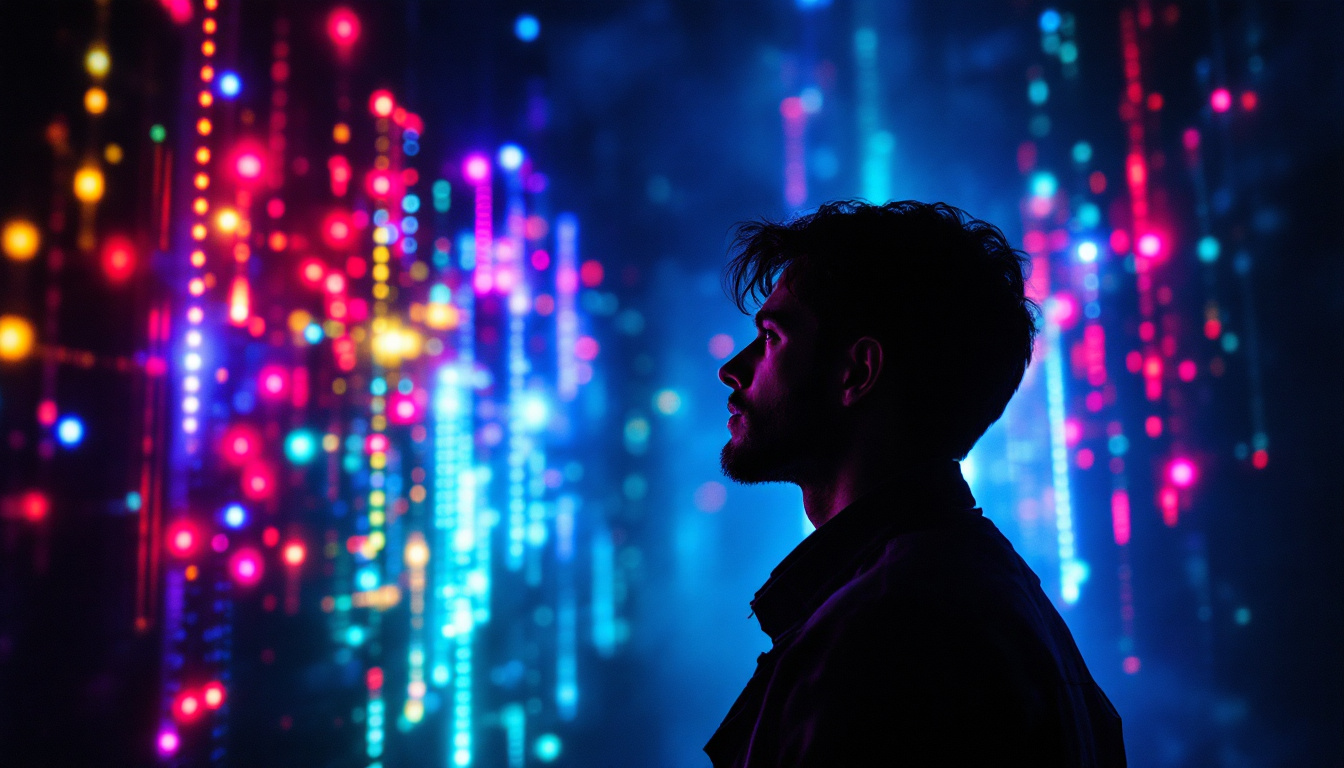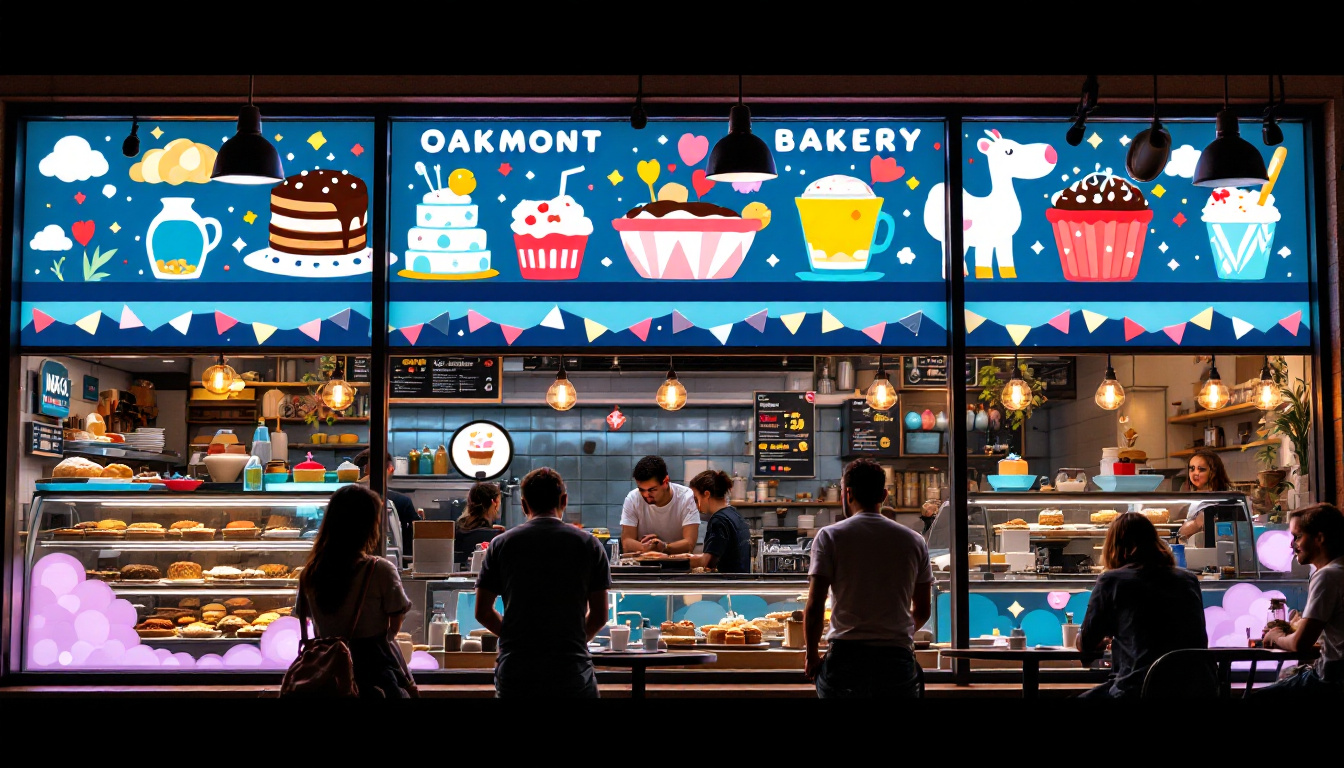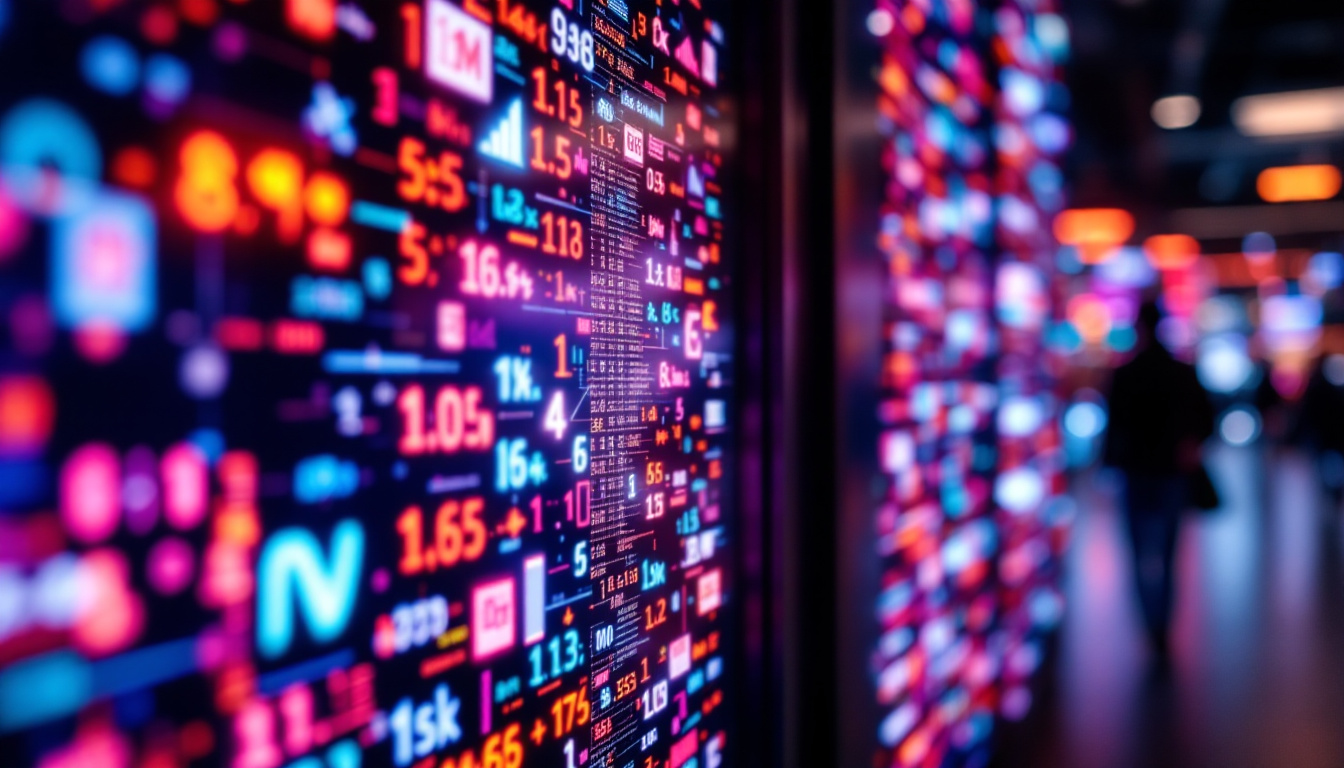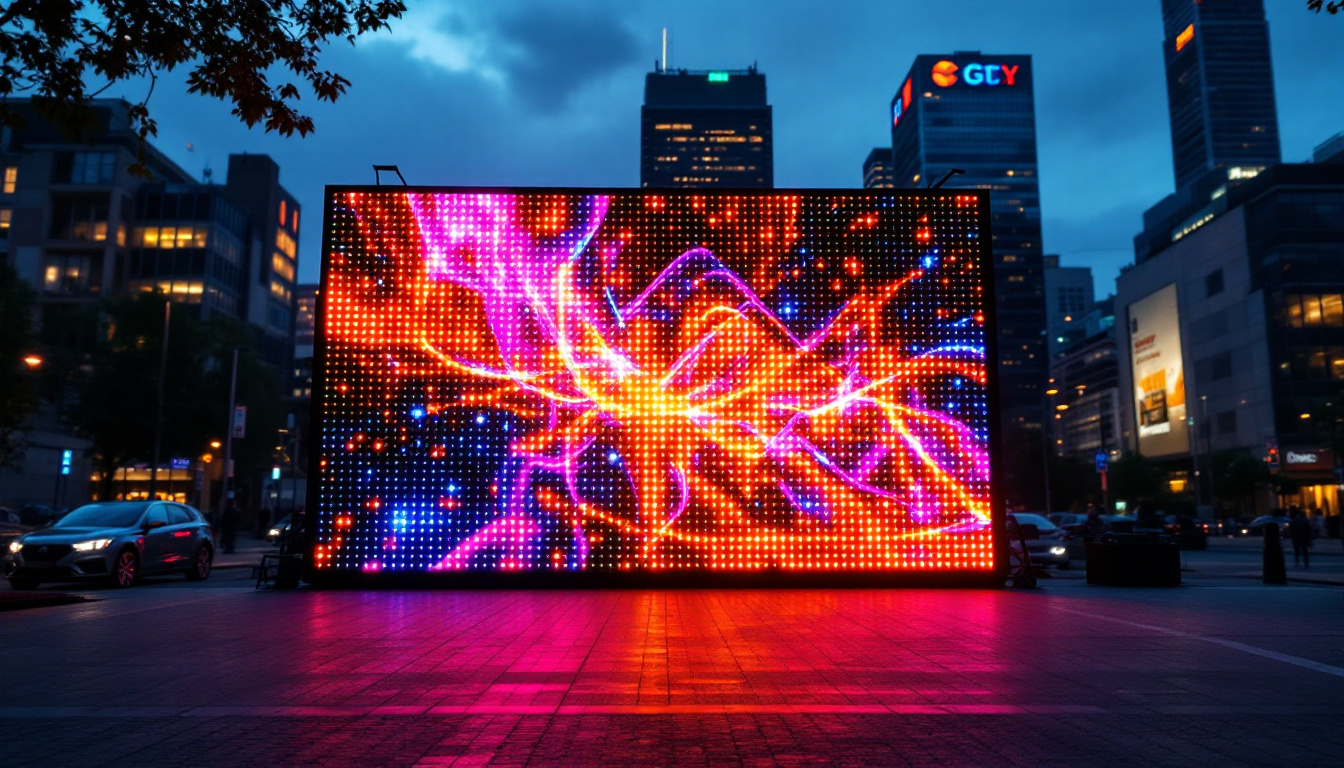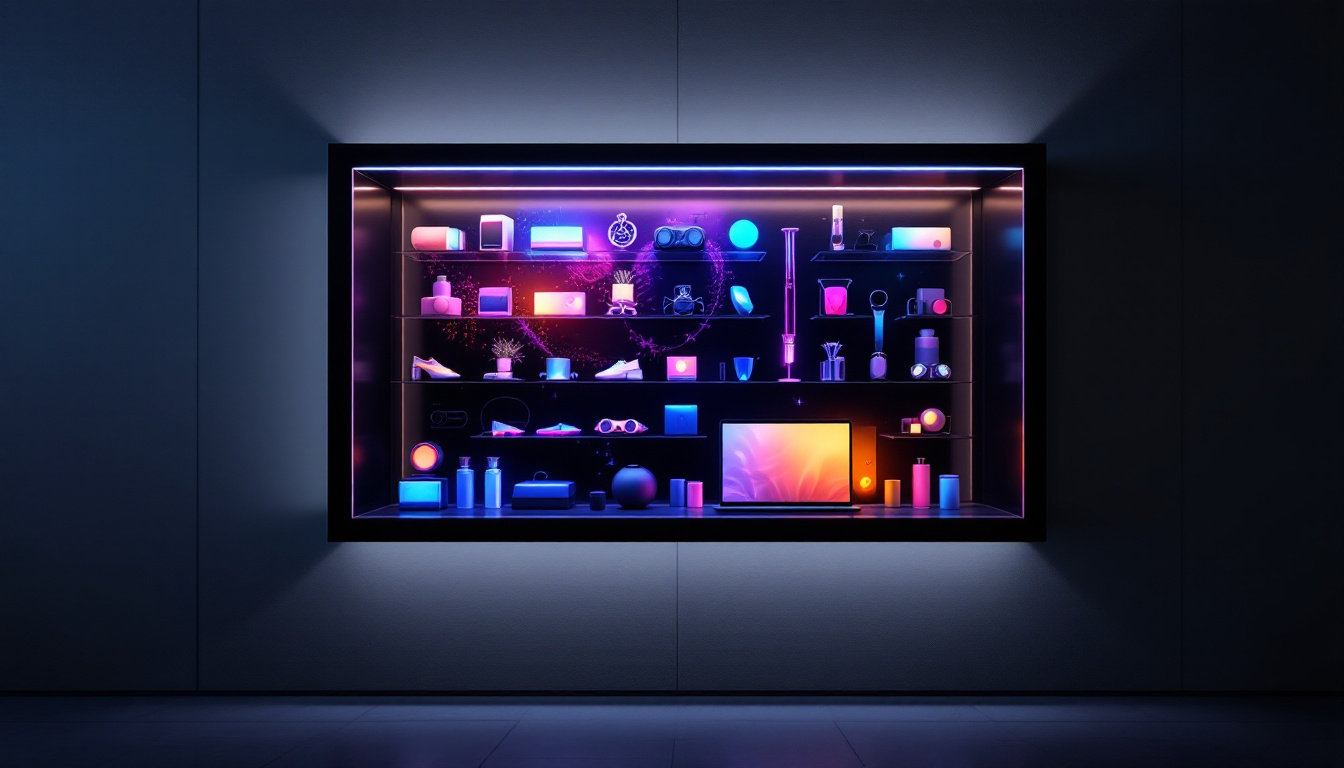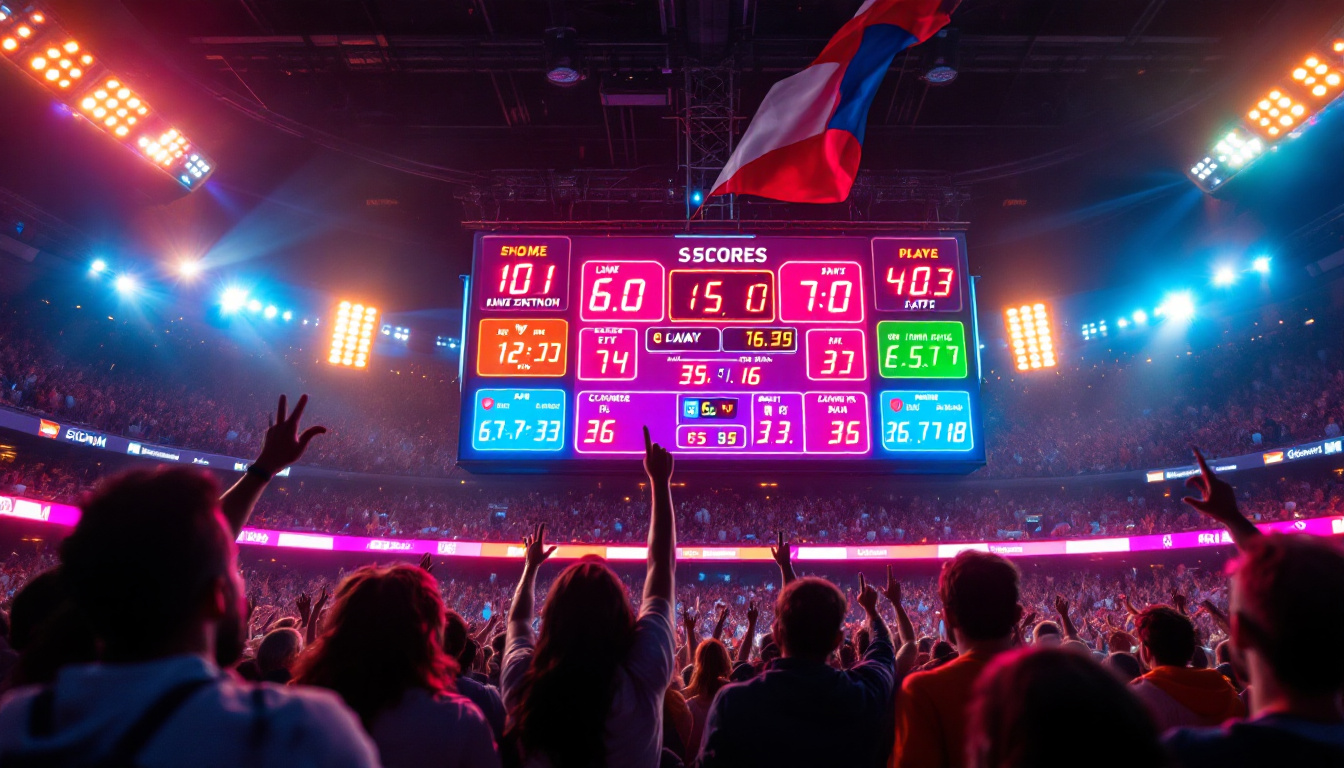In the realm of visual technology, LED displays have revolutionized the way information is presented. From billboards to televisions, the versatility and efficiency of LED technology have made it a popular choice across various industries. This article delves into the intricacies of LED displays, exploring their functionality, advantages, and applications.
Understanding LED Technology
LED, or Light Emitting Diode, is a semiconductor device that emits light when an electric current passes through it. Unlike traditional incandescent bulbs, LEDs are more energy-efficient and have a longer lifespan. This technology has paved the way for vibrant displays that are not only visually appealing but also environmentally friendly. The shift towards LED technology is not merely a trend; it represents a significant leap towards sustainability, as LEDs consume up to 80% less energy than incandescent bulbs and can last up to 25 times longer. This reduction in energy consumption translates to lower electricity bills and a decreased carbon footprint, making LEDs a smart choice for both consumers and businesses alike.
The Basics of LED Operation
At its core, an LED display consists of numerous tiny diodes that emit light in various colors. These diodes are arranged in a grid format, allowing for the creation of images and videos. The combination of red, green, and blue (RGB) diodes can produce a wide spectrum of colors, making LED displays capable of showcasing high-definition content. This RGB combination is crucial for achieving the vibrant hues and deep contrasts that are characteristic of modern displays, enhancing the viewing experience for audiences. Furthermore, the ability to control each diode individually allows for intricate designs and animations, which can be dynamically adjusted to suit different contexts and environments.
The operation of an LED display is based on the principle of electroluminescence, where the movement of electrons through the semiconductor material generates light. This process is not only efficient but also allows for rapid response times, making LED displays ideal for dynamic content. The quick refresh rates of LED technology enable smooth transitions and animations, which are particularly beneficial in applications such as live events, advertising, and interactive installations. Additionally, the durability of LEDs means they can withstand harsh conditions, making them suitable for both indoor and outdoor use, from concert stages to sports arenas.
Types of LED Displays
LED displays come in various forms, each designed for specific applications. The most common types include:
- Direct View LED Displays: These displays are composed of individual LED modules that create images directly. They are often used for large outdoor signage and digital billboards, capturing the attention of passersby with their brightness and clarity, even in direct sunlight.
- LED Backlit Displays: These are typically found in televisions and computer monitors. The display panel is illuminated from behind by LEDs, enhancing brightness and contrast. This technology allows for slimmer designs and improved energy efficiency, making it a popular choice among manufacturers.
- Organic LED (OLED) Displays: A more advanced technology, OLEDs use organic compounds to emit light. They offer superior color accuracy and contrast ratios, making them popular in high-end televisions and smartphones. OLED displays can achieve true blacks, as individual pixels can be turned off completely, resulting in an unparalleled viewing experience.
In addition to these common types, there are also specialized LED displays designed for niche applications. For instance, transparent LED displays are emerging as a revolutionary way to blend digital content with physical environments, often used in retail spaces to create eye-catching advertising without obstructing visibility. Similarly, flexible LED displays are gaining traction, allowing for innovative designs that can curve and bend, opening up new possibilities in architectural and artistic installations. As technology continues to evolve, the versatility and applications of LED displays are expanding, promising even more exciting developments in the future.
Advantages of LED Displays
LED displays offer numerous advantages over traditional display technologies, making them a preferred choice for many applications.
Energy Efficiency
One of the most significant benefits of LED technology is its energy efficiency. LED displays consume significantly less power compared to traditional displays, leading to lower energy costs. This efficiency not only benefits the environment by reducing carbon footprints but also saves money for businesses and consumers alike. In fact, many organizations are now opting for LED technology as part of their sustainability initiatives, recognizing that the reduced energy consumption translates into a smaller ecological impact. Moreover, the long-term savings on electricity bills can be substantial, allowing businesses to allocate those funds to other critical areas.
Longevity and Durability
LED displays are known for their impressive lifespan, often lasting over 50,000 hours of continuous use. This durability makes them less prone to burn-in issues that can affect other display types, such as plasma screens. Additionally, LEDs are resistant to shock and vibration, making them suitable for outdoor environments where traditional displays may fail. This resilience is particularly advantageous for industries that require constant display usage, such as advertising and transportation. Furthermore, the low maintenance requirements of LED displays contribute to their cost-effectiveness, as they reduce the need for frequent replacements or repairs, allowing businesses to focus on their core operations without the distraction of display malfunctions.
Brightness and Color Quality
LED displays are renowned for their brightness levels, which can be adjusted to suit various lighting conditions. This adaptability ensures that content remains visible even in direct sunlight. Furthermore, the color quality of LED displays is exceptional, providing vibrant and accurate colors that enhance the viewing experience. The ability to produce a wide color gamut allows for more lifelike images, making LED displays particularly popular in fields such as digital signage, video production, and gaming. Additionally, advancements in LED technology have led to improvements in color uniformity and contrast ratios, ensuring that viewers enjoy a consistent and immersive experience, whether they are watching a movie, playing a video game, or viewing a presentation. This high-quality visual output not only captivates audiences but also plays a crucial role in effective communication and branding strategies.
Applications of LED Displays
The versatility of LED displays allows them to be used in a wide range of applications across different sectors.
Advertising and Marketing
One of the most prominent applications of LED displays is in advertising. Digital billboards and storefront displays utilize LED technology to capture the attention of passersby. The ability to change content quickly and easily allows businesses to promote special offers, events, and new products effectively. Furthermore, the vibrant colors and high brightness of LED displays ensure that advertisements stand out, even in bright daylight. This capability not only enhances visibility but also increases engagement rates, as dynamic content can attract more viewers compared to static signage. Many companies are also leveraging interactive LED displays, allowing customers to engage with the content directly, thus creating a more immersive shopping experience.
Entertainment and Events
In the entertainment industry, LED displays are used in concerts, festivals, and sporting events. Large LED screens provide audiences with a clear view of performances, enhancing the overall experience. Additionally, LED walls can create stunning visual effects, adding to the excitement of live shows. The flexibility of LED technology allows for intricate designs and animations that can synchronize with music and performances, creating a captivating atmosphere. Beyond concerts, LED displays are also integral in theaters and cinemas, where they can showcase trailers and advertisements, or even serve as backdrops for live performances, thus broadening their utility in the entertainment sector.
Information and Transportation
LED displays are also widely used in transportation systems, such as airports and train stations. Digital signage provides real-time information about arrivals, departures, and delays, ensuring that travelers are well-informed. This application enhances operational efficiency and improves the overall passenger experience. Moreover, LED displays can be found in public transit systems, such as buses and subways, where they display route information and upcoming stops. This not only aids passengers in navigating their journeys but also contributes to reducing anxiety associated with travel. In addition, the durability and low maintenance of LED technology make it a reliable choice for outdoor installations, where they can withstand varying weather conditions while continuing to provide essential information to commuters.
Challenges and Considerations
While LED displays offer numerous benefits, there are also challenges and considerations that need to be addressed.
Initial Costs
The initial investment for LED display technology can be higher than traditional display options. However, it is essential to consider the long-term savings in energy costs and maintenance. Over time, the total cost of ownership for LED displays can be significantly lower, making them a cost-effective choice in the long run.
Heat Management
LED displays generate heat during operation, which can affect performance if not managed properly. Adequate cooling systems are necessary to ensure optimal functioning and longevity. This consideration is particularly important for large-scale installations where heat dissipation can be a concern.
Future Trends in LED Technology
The future of LED technology looks promising, with ongoing advancements and innovations shaping the landscape of display technology.
MicroLED Technology
MicroLED is an emerging technology that promises to take LED displays to the next level. By using microscopic LEDs, this technology allows for higher resolution displays with improved color accuracy and contrast. MicroLED displays are expected to be more energy-efficient and offer even greater flexibility in design.
Integration with Smart Technology
As smart technology continues to evolve, the integration of LED displays with IoT (Internet of Things) devices is becoming increasingly common. This integration allows for dynamic content updates, remote management, and enhanced interactivity. Businesses can leverage this technology to create personalized experiences for their customers.
Sustainability Initiatives
With growing concerns about environmental impact, the LED industry is focusing on sustainability initiatives. Manufacturers are exploring eco-friendly materials and production processes to minimize waste and reduce carbon footprints. This shift towards sustainability is expected to drive innovation and attract environmentally conscious consumers.
Conclusion
LED displays have transformed the way information is conveyed, offering unmatched brightness, energy efficiency, and versatility. As technology continues to advance, the applications and benefits of LED displays will only expand, making them an integral part of modern visual communication. Understanding the intricacies of LED technology is essential for businesses and consumers alike, as it paves the way for informed decisions in a rapidly evolving digital landscape.
Illuminate Your Space with LumenMatrix
As you consider the vast possibilities of LED displays outlined in this article, take the next step with LumenMatrix. Our commitment to innovation in LED display technology ensures that your message shines brightly, whether through an Indoor LED Wall Display, a vibrant Outdoor LED Wall Display, or any of our other tailored solutions. Experience how our LED displays can transform your visual communication and captivate your audience. Check out LumenMatrix LED Display Solutions today and light up your brand’s future.

